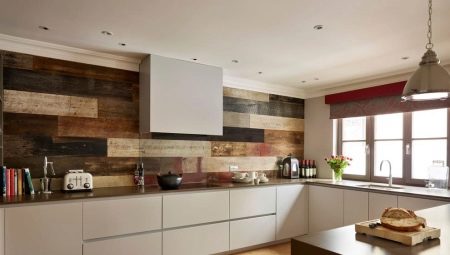For many hundreds of years, one of the most popular and sought-after materials for interior and exterior decoration of a room has been wood, which has high aesthetic indicators and a beautiful texture, but at the same time, low resistance to temperature fluctuations and humidity. The high demand for wood finishing material and its negative characteristics forced manufacturers to work on creating no less beautiful, but more universal analogs.
Modern equipment and innovative technologies have allowed large enterprises to launch the production of laminate, which could become a worthy replacement for wood in the decoration of premises such as the kitchen.
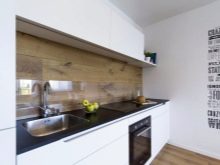
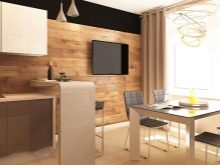
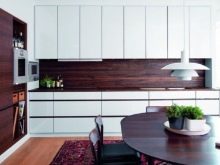
Today, kitchen aprons made of laminate can be found in the design of modern rooms, instead of traditional wood.
Description
A kitchen apron is one of the most important elements in the room where the food is prepared. It should not only harmoniously combine with the general interior and emphasize its style, but also reliably protect the walls from the negative effects of high temperature, steam and moisture. For many decades, designers used various types of wood to design elite rooms, but they had to undergo a complex processing process. The use of protective compounds significantly increased the price of the already expensive natural material.
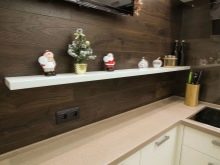
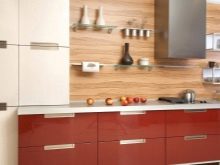
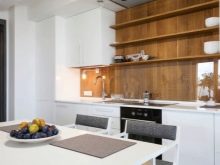
The situation has changed radically since the advent of the laminate on the construction market, the texture of which completely repeats the structure of various types of wood, and some models imitate stone, tile and granite.
High strength indicators of laminated boards are due to the original purpose of the product - floor surface coating. But thanks to the wide color gamut, the material began to be used for wall decoration.
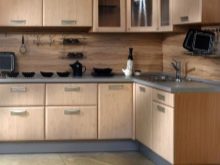
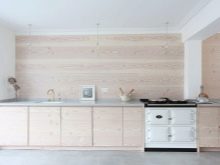

Particular attention should be paid to the structure of the laminate, which consists of a fiberboard coated with acrylate or melamine resin. The fiberboard manufacturing process involves pressing technology and fixing the paper layer, on which a graphic pattern is subsequently applied. The final stage of laminate manufacturing is gluing a protective film, which increases the level of resistance to mechanical damage, and also reduces the negative impact of ultraviolet radiation.
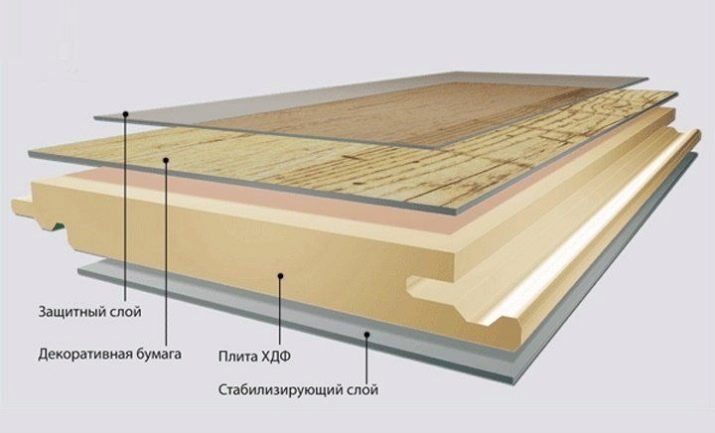
Advantages and disadvantages
Like all building materials, laminate flooring has its pros and cons. Consider the advantages of using it for a kitchen apron:
- high resistance to dirt, grease, steam and high temperatures, as well as to the action of compounds with high acidity;
- resistance to the action of chemical cleaning compounds;
- ease of installation;
- no need to purchase special tools for fixation;
- availability;
- wide color and texture range;
- long period of operation;
- an opportunity to use in various stylistic directions;
- affordable price range;
- receiving the minimum amount of waste.
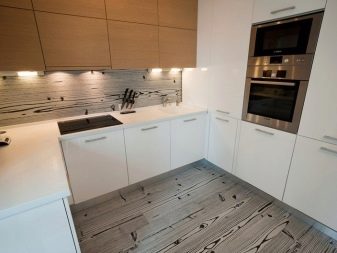
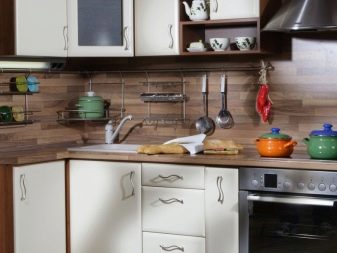
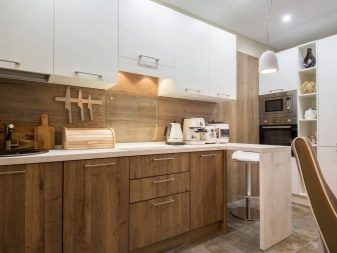

Disadvantages:
- location of heating sources at a remote distance;
- obligatory sealing of all joints.

Designers recommend using a laminate to finish a kitchen apron if if the interior of the room corresponds to the following stylistic directions:
- retro;
- classic;
- Empire
- baroque;
- minimalism;
- Art Nouveau;
- high tech.
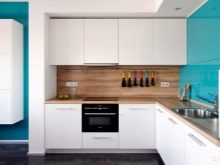
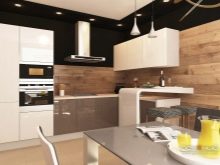
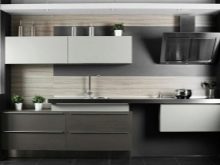
To design a kitchen in the style of Provence and country, it is better to give preference to a laminate with the effect of aging.
Kinds
Laminate is a unique building material with several varieties.
- MDF panels - lacquered paper plate, which has a low resistance to moisture. Advantages - low price, ease of installation and availability.
- Chipboard - moisture resistant material that can be fixed without using a crate. The disadvantage is the presence of non-laminated ends.
- HDF laminate (laminated hardboard) is a compressed material that has an increased level of density and is installed only on the crate.
- Floor laminate - A simple floor covering that can also be used for a kitchen apron.
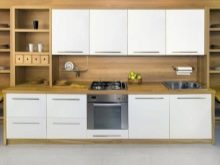
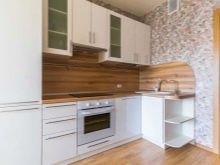
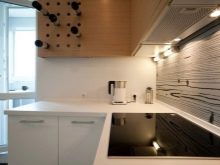
How to choose?
In order for the product to serve more than a dozen years, it is necessary for novice masters to pay special attention to its selection. On the shelves of modern building stores you can see a wide range of laminate flooring. However, not all models can be used as an apron for the kitchen. The selected item must have maximum rate of wear resistance and moisture resistance. Most consistent with these model characteristics class 31 and 32 with environmental safety level E1which contains a minimum amount of formaldehyde particles.
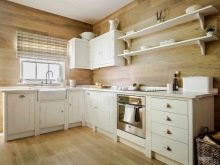
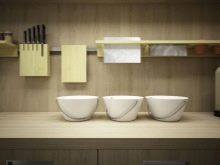
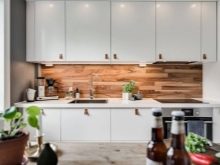
The thickness of the laminated board is in the range from 0.6 to 1.2 cm. For walls it is better to choose average value. And also it is necessary to consider the width of the product - it varies from 9 to 40 cm.
Equally important is the color palette, which includes a large number of shades.
Classic:
- Birch tree;
- cherry;
- oak;
- wenge;
- dark and light nut.
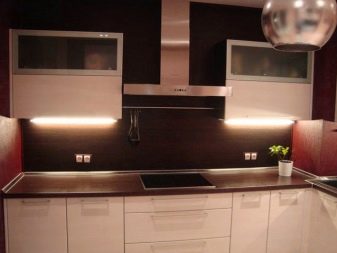
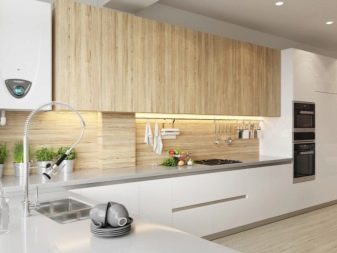
Neutral:
- ash;
- light birch;
- light alder;
- light oak.
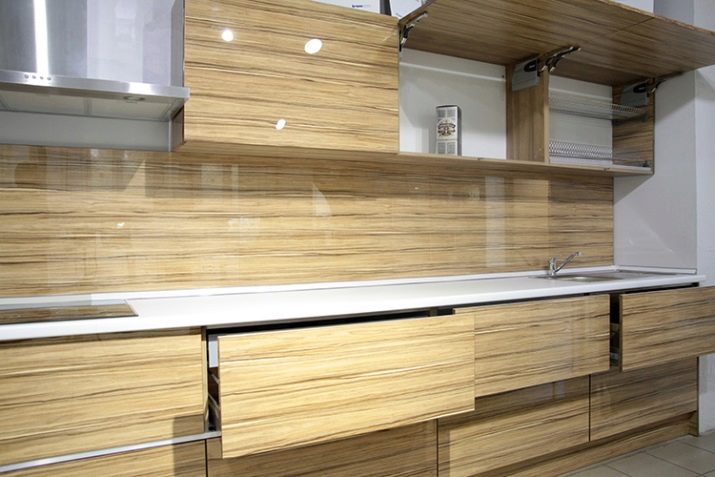
Cold:
- lactic;
- cream;
- light gray;
- bleached oak.

To obtain a harmonious space, it is necessary to select the color of the panels to match the door, window opening and frame. Color matching the shade of the floor with the color of the kitchen apron is not the best option.
Installation methods
In order to securely fix the material to the wall, experts recommend using the following methods of fixation:
- crate;
- fixing with glue under the influence of high temperatures and pressure.
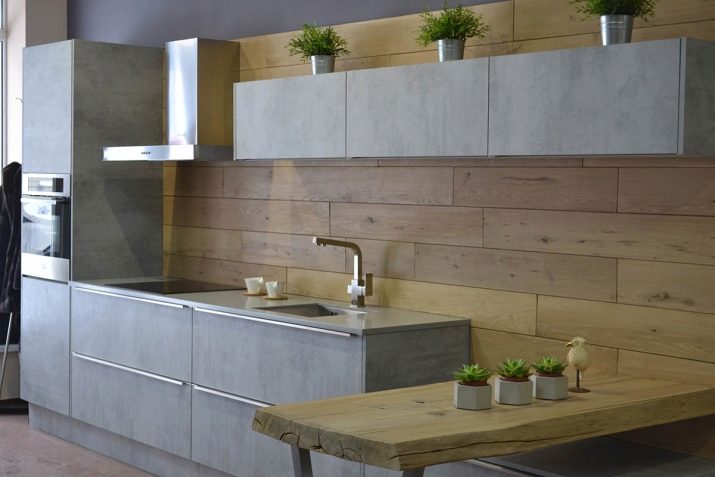
To fix the product yourself, you must have the following set of tools:
- electric jigsaw;
- a hammer;
- building level;
- drawing pencil;
- ruler;
- wooden beam;
- electric drill;
- self-tapping screws, nails or special glue.
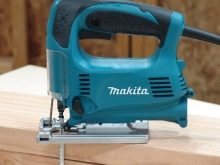
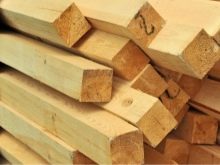

Preparatory steps before attaching the apron:
- adaptation of laminate sheets for two days at room temperature;
- cleaning the work area from furniture and decor items;
- removal of old finishing materials;
- alignment of a wall covering.
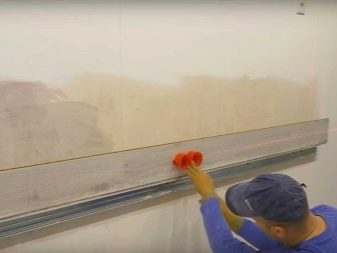
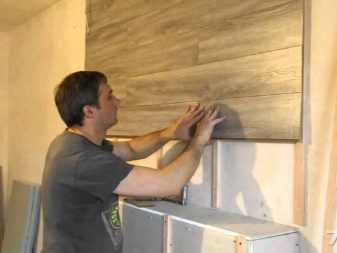
Stages of installation using the lathing method:
- fastening wooden rails with dowels;
- fixing the support beam in the lower part of the apron;
- installation of panels using the existing lock system, as well as using glue and small nails.
Professional builders recommend carefully checking the level of all wooden blocks before fixing the panels, and in case of even small deviations, eliminate all inaccuracies.
The main measures for fixing the laminate directly to the wall:
- cleaning the working surface of old building materials and debris;
- installation of a support panel;
- applying silicone adhesive to the back of the panel;
- fixing the material to the selected place by pressing it to the wall until the initial solidification of the silicone.
Experts recommend only after two hours after mounting the first panel to begin installation of the remaining products. All seams and voids must be coated with hermetic compounds, and do not use liquid nails to fix the panels. The final hardening of the glue will occur only a day after the completion of all work.
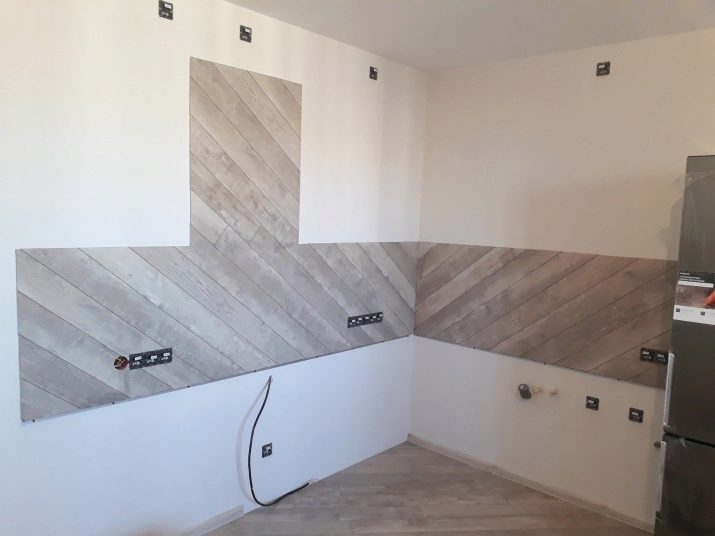
How to care?
In order for the apron from the laminate to look perfect throughout the entire period of operation, it is necessary to follow the basic rules for caring for it. Immediately after installation, clean the entire work surface from dust and debris with clean water and a soft sponge. Remove grease and dirt with gel-like detergents that do not contain abrasive particles.
Particular attention must be paid to mechanical damage and scratches, which immediately after the appearance must be painted over with a special wax pencil. To mask deep and large scratches, builders recommend purchasing a powder for the laminate. The process of applying this composition consists of the following steps:
- water addition according to the recommendations specified in the instruction;
- work surface cleaning;
- distribution of funds in the area with damage;
- removal of excess putty;
- polishing the surface.
In order to make the interior of the kitchen cozy, beautiful and modern, it is not necessary to purchase expensive materials and attract professional craftsmen. Before starting repairs designers recommend paying attention to various groups of building materials and preferring new design solutions, one of which is the finishing of the kitchen apron with laminate.
This material is not only outwardly attractive and inexpensive, but also very practical, and its wide color and texture range will satisfy the wishes of even the most capricious housewives. When purchasing laminated panels, one should not forget about checking permits and certificates that confirm the environmental safety of the goods.
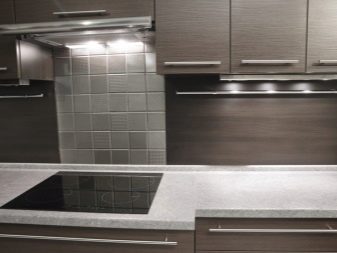
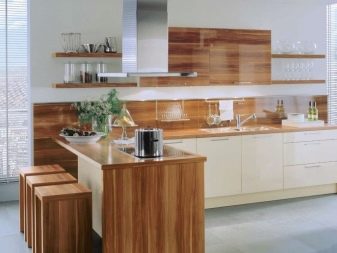
See below for how to make an apron from a laminate.
